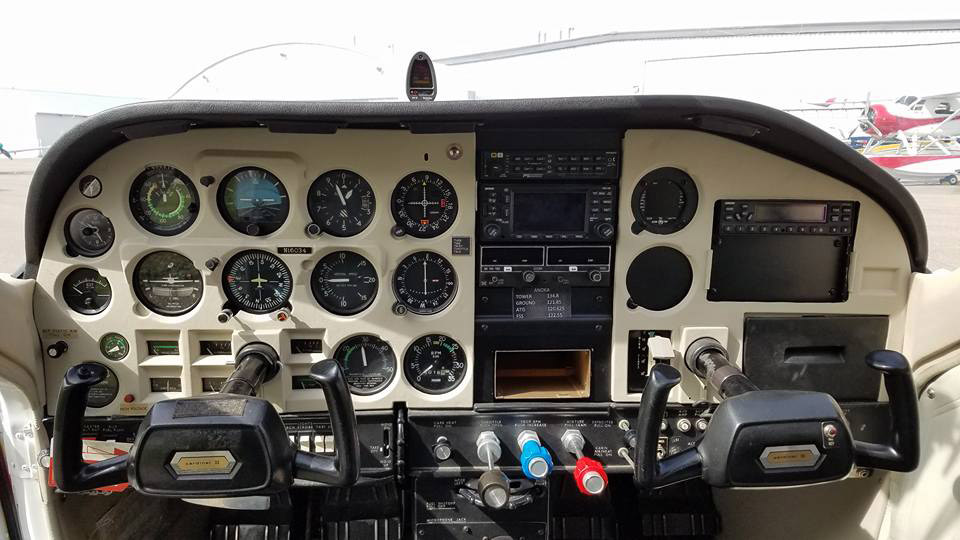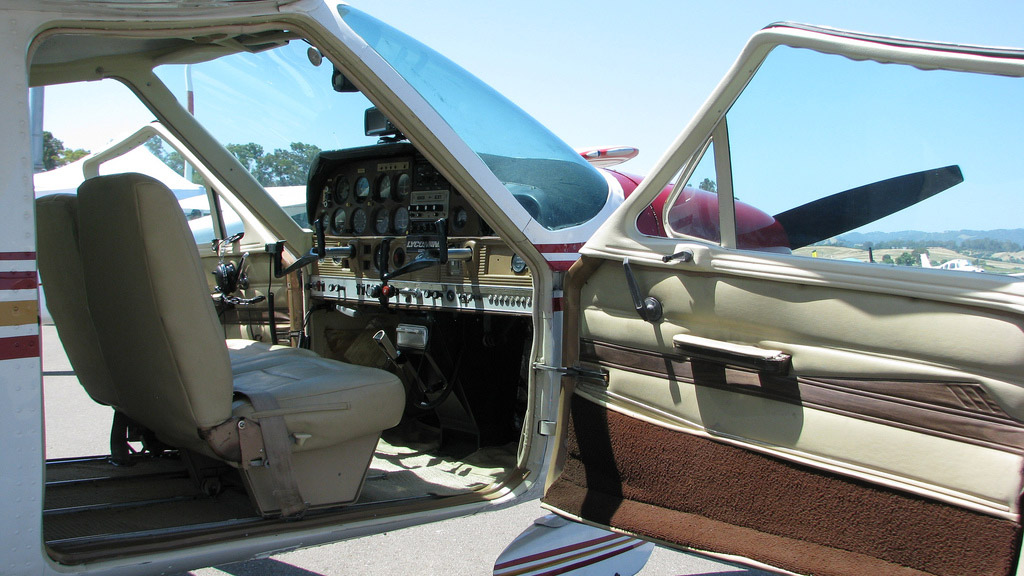The Aircraft Spotlight feature looks at an airplane type and evaluates it across six areas of particular interest to flying clubs and their members: Operating Cost, Maintenance, Insurability, Training, Cross-Country, and Fun Factor.
You might say the Cessna 177 Cardinal is the Goldilocks of the Cessna family. It’s bigger, faster and more complex than the 172, but not quite as big or fast as the 182. Originally designed as a replacement to the 172, the Cardinal, ended up becoming an option that falls squarely between Cessna’s two most popular single-engine aircraft.
In the fall of 2015, Curt Stoltz, Board Member-at-Large for the Anoka, Minnesota-based Gateway Flying Club and Club President Chris Baye shared their experience operating the sleek Cessna that often gets overlooked.
“It’s a good club airplane,” said Curt. “It’s economical. It performs well for the cost and I don’t know if I want to say it’s an elegant airplane but it sure is a good looking airplane.”
Operating Cost: 4
Maintenance: 4
Insurability: 4
Training: 4
Cross Country: 4
Fun Factor: 3
Overall: 4
The Cessna Cardinal debuted in 1968 and was produced for 10 years. Designed as a replacement for the 172, it originally featured a 150-hp Lycoming O-320 engine and a fixed-pitch prop. In 1969, the engine was upgraded to a 180-hp Lycoming O-360, and in 1970 minor improvements included a constant-speed propeller and a new airfoil. A retractable gear version debuted in 1971.
Fuel burn is about 10 gph and Gateway Flying Club charges just $55 an hour, Tach time dry. The purchase price for a fixed-gear Cardinal runs anywhere from $35,000 to $60,000, while a retractable-gear 177 is about $50,000 to $75,000.
“Maintenance-wise, it’s a little more expensive than the 172, but not quite as much as a 182. It falls in the middle,” Chris said. Having a constant speed prop makes the annual more expensive than the 172, but the advantage over a 182 is that it has a smaller engine with a longer TBO.
Although it wasn’t produced in the numbers that that 172 and 182 were, parts are available. Keep in mind, if your club chooses to operate a Cardinal RG, the annual will be more expensive because of the required gear swing.
Getting insurance shouldn’t be a problem – it’s a Cessna and insurance companies are familiar with the type. In 2015, Gateway was paying about $3,500 a year through AVEMCO, which is slightly more than what they pay for their 172 and slightly less than the insurance costs for their 182. Even if your club chooses to get a retractable gear Cardinal, getting insurance shouldn’t be a problem.
“Occasionally we touch base with AVEMCO if we’re considering other airplanes. We’re always halfway in the market for a retractable,” Chris said. “The insurance company said if you want a retractable 172, 177, 182, no problem. We’d very happily let you have one of those. It goes to show the versatility and the insurance friendliness of the airplane.”

Gateway uses the Cardinal for pilots working on their IFR rating. It has a Garmin 430 and an autopilot. However, the Cardinal was developed to replace the 172, so the two planes are very similar. “Systematically they’re the same airplane,” Curt said. “The form is a little bit different, but it’s a big brother to the 172.” Although Gateway primarily uses the 172 for students and pilots with low time, if the 172 is not available, the club will use the Cardinal for training. The main difference being the constant speed prop and the stabilator. Chris said it handles a little different and its best to carry about 100 rpm over idle on landing.
When Gateway members aren’t using the Cardinal for instrument training, the plane is used quite extensively for cross-country travel. “The Cardinal has gone all over the country. Personally I’ve flown to the West Coast over the Rockies – the low VFR route through Salt Lake, Reno, to the Bay area,” Chris said. “It was a 30 hour trip and I averaged 9.3 gph.” And Curt has taken the plane from Minnesota to Sun ‘n’ Fun in Lakeland, Florida.
The Cardinal cruises at about 120 to 125 knots and holds 60 gallons of fuel. Curt said the Cardinal is similar to a Piper Arrow in terms of loading. “With two people you can have full fuel and fill the back end with anything you want, with three people you can have minimal baggage, and with four people you can take a toothbrush and maybe a bottle of helium,” Curt joked. According to the pilot operating handbook, the useful load is 940 pounds.
One advantage is the Cardinal has the widest cabin of any of the smaller single-engine Cessnas. “Until you get to the Cessna 210, you don’t get a wider cabin,” Curt said. It also has big, wide doors and sits lower than either the 172 or 182, making it more accessible, particular for people who have mobility issues, Chris said. “The airplane has lots of light and space.”
 “In terms of showing it off, it is a sleek airplane,” Curt said. “It sure looks like it’s flying before it’s flying.”
“In terms of showing it off, it is a sleek airplane,” Curt said. “It sure looks like it’s flying before it’s flying.”
Chris added, “It does feel more like a sports car and it handles a bit like a sports car.” One of the things he finds more fun about the Cardinal is the added technical challenge of using the constant speed prop and having cowl flaps. “It demands a little more of the pilot and I think that’s part of it.”
Without a wing strut, and with the front seats positioned ahead of the leading edge of the wing, visibility in a Cardinal is better than the 172 and 182. The glare shield also is lower than in a 182 so you’re not staring at a wall of instruments. “It has that nice windshield and the fully cantilevered wing,” Chris said. “I heard it’s a wonderful photo platform.”
“If I’m going to take someone flying for the first time, maybe take a tour of the city, it’s going to be my plane of choice,” Chris said. “It’s just a nicer airplane for flying around in. It has a little bit better visibility because it doesn’t have a strut and you are out in front of the wing a little bit further.”
 The Cardinal is a good airplane for multiple missions. It can serve as an instrument trainer or in a pinch for primary training. It’s a capable cross county machine and economical to insure and operate. The sleeker design and lower profile make it feel more like a sports car than other Cessnas, while the cantilevered wing and lower glare shield provide excellent visibility, enhancing the flying experience.
The Cardinal is a good airplane for multiple missions. It can serve as an instrument trainer or in a pinch for primary training. It’s a capable cross county machine and economical to insure and operate. The sleeker design and lower profile make it feel more like a sports car than other Cessnas, while the cantilevered wing and lower glare shield provide excellent visibility, enhancing the flying experience.
“One of the things we like about it in a club environment is the fuel burn comes in at about 10 gph. That can be easily realized and it’s got a very comfortable 120 to 125 knot cruise,” Chris said. “The Cardinal was one of the reasons why I joined the club. Once I flew it, I realized it’s truly a gem.”